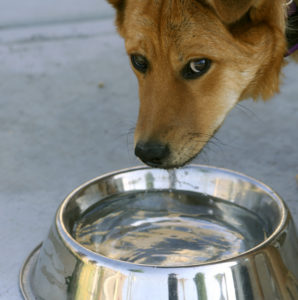Resource Guarding Recommendations

Resource guarders are dogs who behave aggressively when people attempt to separate them from a resource. Resources can include items, spaces, or even people.
Though some dogs restrict their guarding to a specific category of items, or even a single specific item, many guard many different things.
Resource guarding often comes hand in hand with body handling issues – the dog may also dislike being touched on certain parts of the body, act out when fitted with a harness or collar, or resent grooming.
Commonly Guarded Objects
-
Food bowl
Food, bones, and other consumables
Stolen items (Kleenex, garbage, trash found on walks, etc.)
Toys
Crates
Locations (dog beds, couch, human bed, lap, etc.)
People in household (person may think dog is “protecting” them)
Common Parameters
-
Type or value of resource
Quantity of resource
Availability or novelty
Proximity of human to resource (approaching or not)
Angle, speed, and orientation of approach
Person trying to take object away from dog
Duration of possession of the object
Touch – the dog or the item
Warm up (cold attempt or after several successful attempts)
Considerations for Families:
Does a food bowl have to be used to dispense food? Can the dog be fed by hand or in a Kong or Buster Cube?
Recommendation: Feed the dog on a small area rug away from family traffic. Drop handfuls of dog food onto the rug. The dog should sit between each handful of dog food. Any of the food bowl exercises described below can be done on the area rug.
Can the dog be fed in his own dining area (crate or room with door closed)?
Recommendation: The dog should be fed in an area away from family traffic.
What will be the strategy for removing an object from the dog’s mouth?
Recommendation: Toss a handful of treats away from the dog and the object he is guarding. The goal is to get the dog to run in the opposite direction and away from the bowl or object. The movement of the treats will trigger his desire to chase prey, and the smell of the treats will cause him to leave the object.
Do not manhandle or dominate the dog if he is guarding something. If he does not leave the object for the first treat toss, do it again.
Young children should always be supervised when with the dog and should NOT use toys or food in their interactions with the dog.
Dogs that guard objects and people may not be appropriate in homes with children.
Overview
Remove all options and possibilities for guarding. For example, install a baby gate to prevent his access to the kitchen. Crate the dog whenever food is available (for example, during dinner preparation). The dog should also be crated during snack times.
Feed the dog by hand.
The dog must sit before each handful of food is delivered to the mat or bowl.
Philosophy and Daily Work
Theory: A hand approaching the mat or bowl should predict something good for the dog.
Practice: Ask the dog to Sit (or wait for him to Sit). Place the food bowl down with some kibble in it. Say, “Eat.” As the dog eats, toss a treat better than the kibble into the bowl.
Theory: With daily practice, the dog will learn to leave his bowl for tossed treats.
Practice: Ask the dog to sit. Place the food bowl down with some kibble in it. Say, “Eat.” As he eats, say “Dog Name, get it” and toss a handful of treats in front of the bowl. When he leaves the bowl, pick it up. Ask him to Sit when he comes back and continue to practice Sit/Eat/Get it.
Theory: With daily practice, the dog will tolerate removal of the bowl while eating.
Practice: Ask the dog to Sit. Place the food bowl down with some kibble in it. Say, “Eat.” As he eats, say “Dog Name, Give me that.” Remove the dog bowl and place more kibble in it while he watches. Wait for him to Sit.
Reminders
-
Do not do trials when the dog is very hungry. It is OK to practice at a time other than mealtime.
Plan where the dog will be during snack time, mealtime, and family time when food is present. Crate? Another room?
Do not give the dog bones, rawhides, etc.
Dogs may guard many things, including paper, shoes, people, water, etc. What they guard may evolve over time. Remain curious about what he is likely to guard and notice if he exhibits new guarding behaviors.
Body language to look for
-
Freezing
Growling
Three-point position (muzzle and forepaws over object); dog appears “hunkered down” or “settled in”
